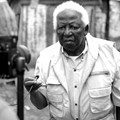Marketing & Media trends
Industry trends
BizTrends Sponsors
Trending
#BizTrends2024: Capturing change: 5 trends in South African photography

And as the art of photography continues to evolve in various ways, it is also growing in accessibility.
5 trends in South African photography
Photography is no longer just a medium capturing reality; it’s become the subject matter, exploring the intricacies of self-identity and collective narratives
- Shifting subject matters: From observers to storytellers
As younger South Africans have started taking photographs, a noticeable shift has taken place as imagery has gone from being mainly stories told about their community, to stories being narrated by the community itself.
The focus has moved from external observation to internal self-expression, with photographers playing the role of both artist and subject.
Photography is no longer just a medium capturing reality; it’s become the subject matter, exploring the intricacies of self-identity and collective narratives.
Another significant development linked to this is that it’s becoming more common to see photographers incorporating other mediums into their work. Moving images, audio, and even drawings are now seamlessly integrated into bodies of work to amplify the voice of the artist and help them tell their story.
This collaborative use of different mediums aims to break free from conventional constraints to create a more multifaceted representation of the South African experience.
- Technological (d)evolution: From digital back to analogue
While technology remains a driving force in both the practice and consumption of photography, a surprising counter-trend has emerged – a return to analogue and film.
Despite the convenience offered by digital tools, many photographers are opting for analogue methods. This is because analogue photography preserves the essence of the technique of taking a photo, which demands time and dedication.
This resurgence signals a desire for a more deliberate and thoughtful approach to image creation, challenging the notion that accessibility equates to authenticity.
- Market dynamics: Navigating expectations
In the global market, South African photography faces a nuanced challenge. While the market is open and more people are interested in working from here, there persists an expectation that African photography should adhere to traditional stereotypes.
Buyers often influence the work, inadvertently shaping a narrative that caters to preconceived notions of what African art should be. The journey toward a more inclusive and diverse market is ongoing, with a need for broader acceptance of unconventional narratives.
- Subjects as collaborators: Empowering communities
Historically, communities were subjects in photographs, not collaborators.
However, a massive paradigm shift is underway, driven by increased awareness of photography within communities. People are no longer passive participants; they actively engage with photographers, understanding and influencing the narrative of the image.
This has been informed by the sort of work we do at Of Soul and Joy, which has contributed to a growing awareness of the power of representation. In some ways, this has made it harder to take photographs of people acting naturally.
But that’s maybe a good thing because people have a better grasp of what it means to have their photo taken and displayed.
We have to adapt to this and ensure that individuals who form the subject of our work are involved in the creative process as well as the outcome of the work so that they’re able to exercise a sense of control over their narratives.
- Career realities: Beyond qualifications
More and more with photography, a qualification doesn't guarantee success.
Whereas having mentorship is essential to learning the tools of the craft, networking and self-promotion now play a pivotal role, perhaps even more than in traditional careers.
The emphasis is on putting one's work out into the world and navigating the complex landscape of connections.
The evolving nature of the photography profession demands adaptability and a keen understanding of the industry's ever-changing dynamics. In general, though, there are more opportunities than ever before.
With South African photography undergoing a profound transformation in both subject matter and access to technology to more interest from markets and empowered communities, the landscape is evolving.
Buyers often influence the work, inadvertently shaping a narrative that caters to preconceived notions of what African art should be
The future holds exciting possibilities as photographers continue to redefine their role, narratives become more diverse, and communities actively shape their visual representation — there’s never been a better time to pick up a camera.











